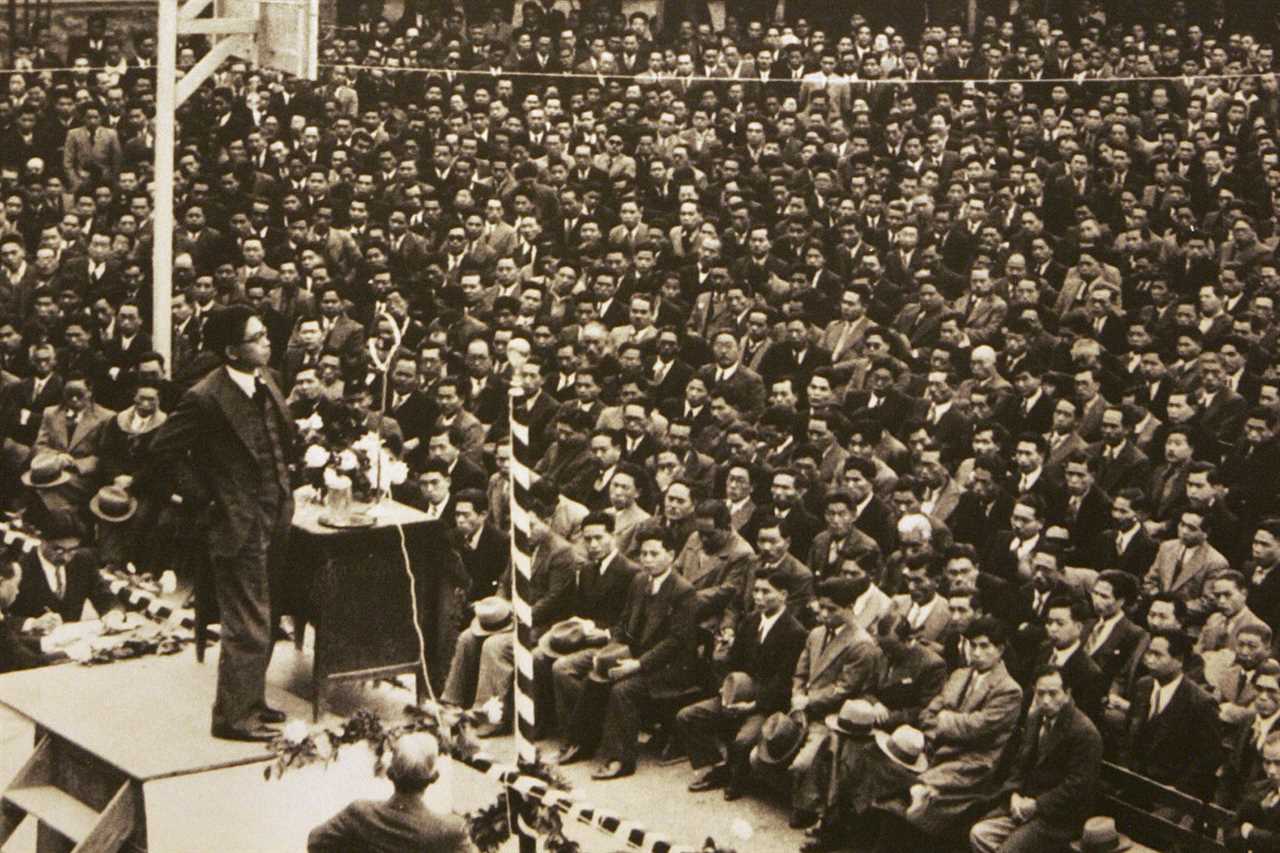
That March morning in 2017, Art Shibayama had come to Washington by choice. The organization that had invited him is housed in an imposing marble structure adjacent to the White House that has stood since 1910 as a reminder that, outside U.S. borders, the word “America” doesn’t describe a country but a whole continent. Before the human rights commission of the Organization of American States, a regional alliance of Western Hemisphere countries, Shibayama unspooled a tragic succession of indignities he and his family had been made to suffer nearly eight decades earlier, as he charged the U.S. government with violating his human rights.
What Shibayama, by then a resident of California, told the OAS in person and in legal documents, was that he was brought to America by force. In 1944, during the height of World War II, a 13-year-old Shibayama was living with his family in Lima, Peru, where his grandparents had immigrated from Japan years earlier. On March 1, Peruvian police arrived at the family’s home in broad daylight to round them up and hand them over to U.S. authorities. For 21 days, the Shibayamas traveled below deck on a U.S. naval vessel with dozens of other Peruvians of Japanese descent, bound for New Orleans. From there, armed U.S. military personnel would take them to a camp in Crystal City, Texas, where they were held as candidates for a hostage exchange program with Japan, even though Shibayama was born in Peru and a citizen of that country.
As he testified in 2017, what seemed to weigh most heavily on Shibayama’s mind was the official label the government gave him after eventually releasing him. “I want the government to erase the ‘illegal’ status from my record,” Shibayama told the commission, his elbows supporting the weight of his frame as he leaned into the microphone. “The government brought us here at gunpoint — so how could they classify us as illegal aliens?”
Most Americans today are well aware that, during World War II, the U.S. government imprisoned Japanese Americans, including U.S. citizens, in internment camps on no other evidence than the fact of their heritage. They know of the wartime hysteria that cloaked the government’s logic, and the racism and xenophobia Japanese Americans faced. But one chapter of this history has remained much more hidden, much less acknowledged by public officials: The United States simultaneously ran a parallel internment system that confined some 2,200 Latin Americans of Japanese descent, kidnapping individuals from countries such as Peru, Bolivia and Colombia — whose political leaders were in on the plot — and confining them on U.S. soil.
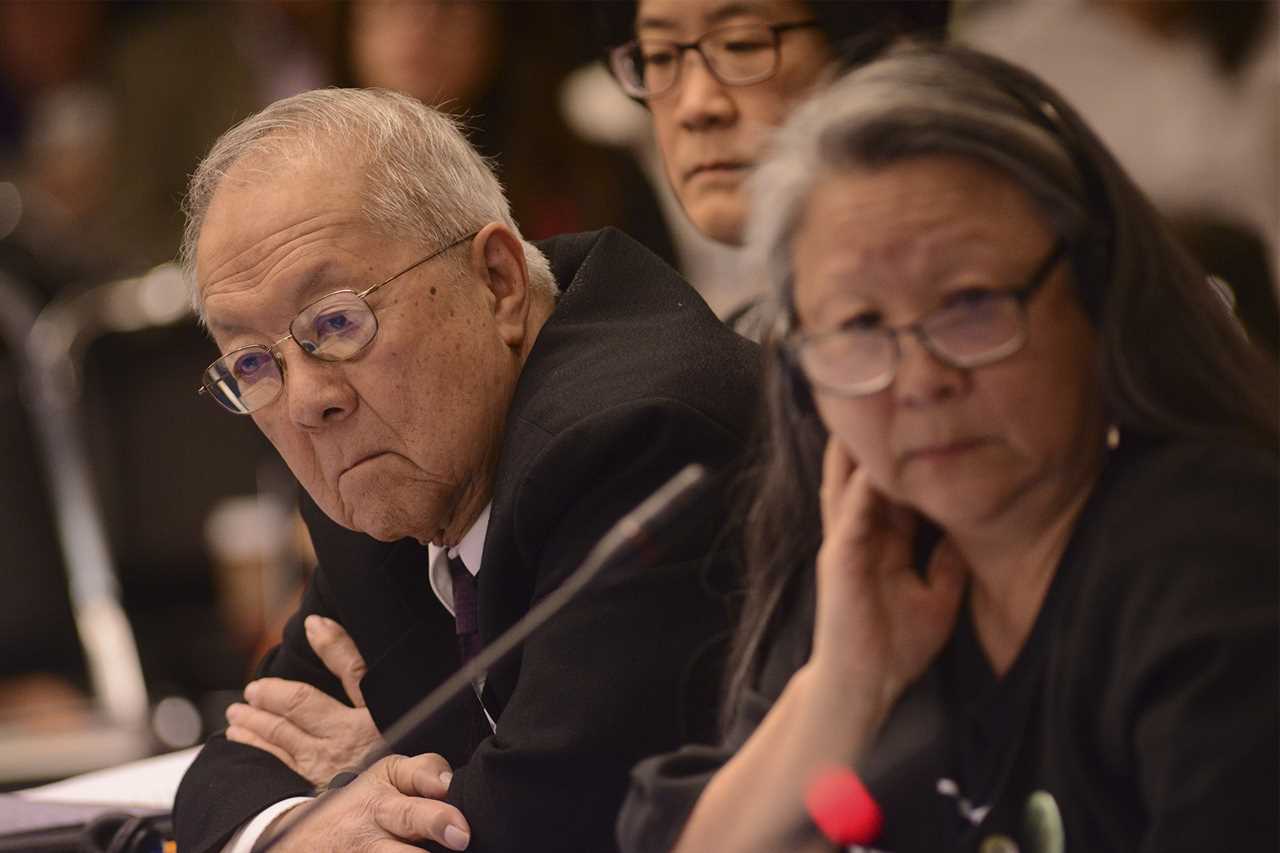
Most Americans also probably think the Japanese internment chapter was closed decades ago, when the U.S. government approved the largest reparations program it has ever enacted: the Civil Liberties Act of 1988, a historic law that gave $20,000 and a formal apology to victims of Japanese internment who were U.S. citizens or permanent residents. But as the country praised itself for righting that historical wrong, it excluded those it had kidnapped from abroad. Although many of them were exiled to Japan after the war, the Japanese Latin Americans who remained in the United States were ineligible for the reparations program. They later received some compensation through a court settlement, but the sum was so much lower and the apology so formulaic that some decided not to accept.
While the United States government has admitted to the Japanese Latin American internment program, the dwindling group of living victims and their descendants — including Shibayama’s daughter, Bekki — are still pushing for full compensation and recognition. And they argue the responsibility for addressing this moral debt now falls squarely on the shoulders of President Joe Biden and his administration. Their prospects might have looked better at a time of growing support for reparations and with a president who has pledged to defend human rights, as well as a Cabinet member who once vocally supported their cause. Yet, so far, the White House has been mostly silent, seeming to ignore requests for information or meetings from high-level international officials and the victims’ families.
Shibayama died in 2018, in San Jose, Calif., after decades living in America as a farmworker, an undocumented immigrant, an Army draftee and, since 1970, a U.S. citizen. But two years after his death, OAS’ Inter-American Commission on Human Rights released a report declaring that the United States had violated his right to equality under the law when it excluded him, as well as his brothers, from the 1988 reparations program. Moreover, IACHR found that Japanese Latin Americans “fell into a sort of legal no-man’s-land” when they were released as undocumented immigrants, a distinction that led to “wild inequalities.” The report made two recommendations to the United States: reparations, including monetary compensation, as well as “full disclosure” of any information the U.S. government had relating to the internment of Japanese Latin Americans.
By all public accounts, the Trump State Department, which had deemed Shibayama’s petition “inadmissible,” did not act in response to the IACHR report. On Aug. 16, 2021, after a new administration had come into power, IACHR tried again, sending a letter to Secretary of State Antony Blinken, obtained by Politico Magazine, that asked the government to provide, by Oct. 15, “detailed information on the actions undertaken by the State during this year to comply with each of the recommendations.” When the administration did not respond, a small organization called Campaign for Justice: Redress NOW for Japanese Latin Americans, which participated in the Shibayama case, decided to reach out to the administration directly.
The group has sent two letters to the Biden administration since September requesting a meeting with the U.S. ambassador to the OAS, Bradley Freden, and, more recently, with the White House’s Asian American and Pacific Islander senior liaison, Erika Moritsugu. Neither the White House nor the Department of State acknowledged receipt of the letters in repeated requests for comment, though U.S. Postal Service tracking information shows they were delivered; Grace Shimizu, one of the letters’ signatories, said Moritsugu recently acknowledged receipt by email. “Like the Trump administration, you have chosen to ignore the IACHR and its October 15th deadline,” the group’s most recent letter, first reported here, states. “A resolution of this matter is long overdue.”
In the first public acknowledgment of this case since Biden’s inauguration, a State Department spokesperson said the agency takes IACHR petitions “very seriously” but noted that the United States has not ratified the 1969 convention that created the commission, “so any recommendations made by the IACHR are non-binding for the U.S. government.” (The IACHR, which did not respond to a request for comment for this article, said in its report that it analyzed Shibayama’s legal claims under the OAS Charter, which the United States ratified in 1951.)
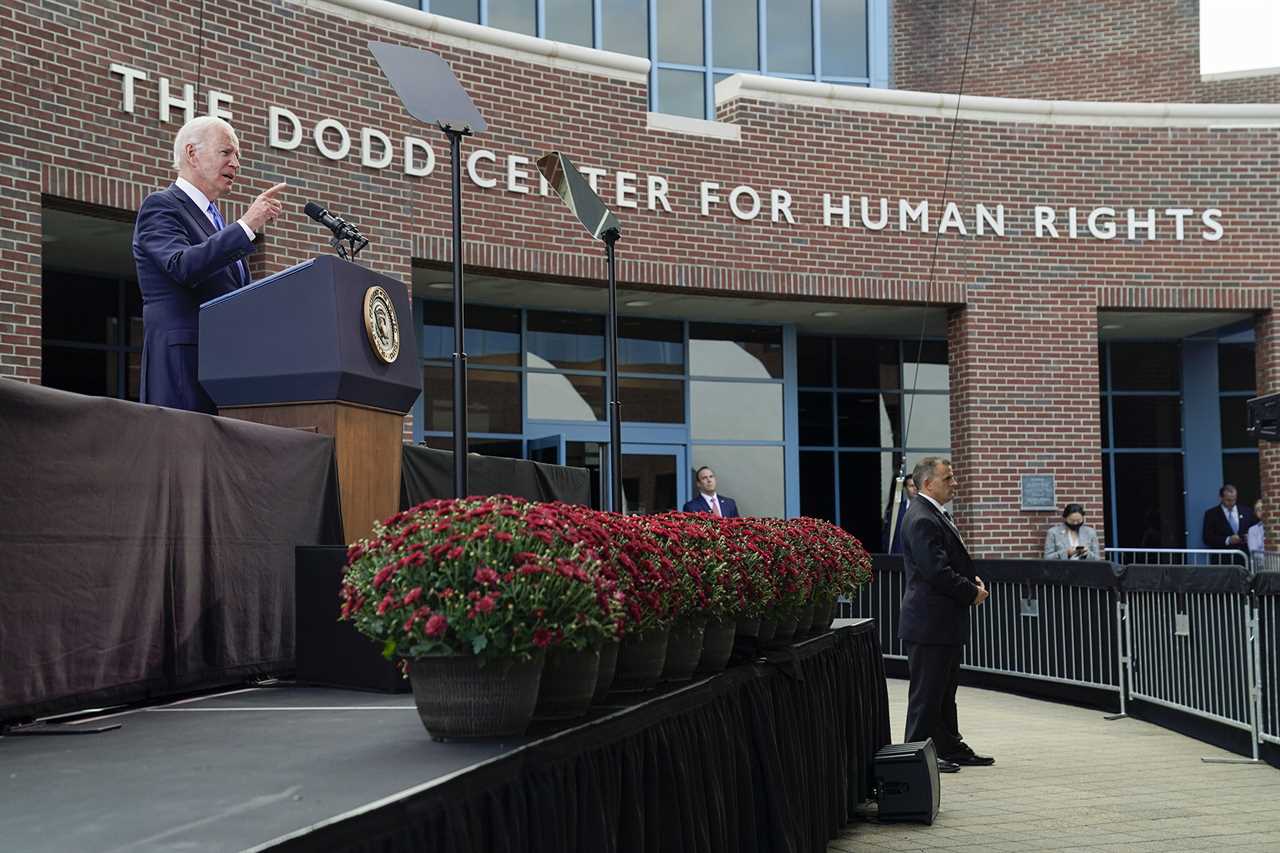
“The United States acknowledges the suffering experienced by the Shibayama family and those similarly situated,” the State Department statement continued. “Nevertheless, the United States reiterates its view that the petition in this case should have been found inadmissible and the IACHR lacked competence to pronounce on its merits.”
The White House did not respond to multiple requests for comment.
The Campaign for Justice had placed their hopes on Biden, who during a February foreign policy speech promised to “defend equal rights of people the world over.” But the group has been dismayed. “I expected more of the Biden Administration than this inaccurate, unfeeling, technocratic response,” Shimizu wrote in an email. Bekki Shibayama wondered: “Why is the United States government compounding the suffering that they have acknowledged against my family and other JLAs?”
On Dec. 9, two days after the 80th anniversary of the bombing at Pearl Harbor, Biden plans to host a “Summit for Democracy” that aims to cast respect for human rights as crucial to democratic well-being. That 80-year chasm also underscores how long interned Japanese Latin Americans have been waiting for redress. The path forward for the Campaign for Justice looks difficult, but Shimizu said that whatever the Biden administration does, “we will continue until our demands for justice are met.”
After all, history, unless insisted upon, has a way of vanishing.
America’s paranoia with Japanese people in Latin America began before Pearl Harbor. According to Densho Encyclopedia, a Japanese American history resource overseen by historians and academics, President Franklin D. Roosevelt in 1940 authorized the FBI to station “legal attachés” at U.S. embassies in Latin America to conduct surveillance of people of Japanese descent and generate a so-called “proclaimed list” of individuals suspected to favor the Axis powers. Although some countries resisted cooperation, Peru was eager to maintain close relations with the United States; its president, Manuel Prado, thought he could consolidate support for re-election at home with a show of force.
The Japanese attack on Pearl Harbor only accelerated the hysteria, and soon, countries like Peru requested U.S. military transports to spirit away individuals they perceived as “threats.” According to a 1998 law review article by Natsu Taylor Saito, a professor of law at Georgia State College of Law, the United States had proposed to repatriate all Axis officials who were in Latin America in early 1942 — but Peru took this plan a step further by also compiling lists of civilians it wished to expel. The U.S.-Peru relationship had been buoyed by a $29 million lend-lease agreement that provided Peru with weapons to defend itself after the war broke out, according to one government report.
The first ship of Japanese Latin Americans bound for the States, carrying 141 men, left Peru in April 1941. In a diplomatic cable from the Lima embassy dated July 1942, the U.S. ambassador to Peru wrote that Prado remained “very much interested [in] the possibility of getting rid of the Japanese in Peru,” and asked about “additional shipping facilities from the United States.” In her article, Saito cites evidence that the State Department knew that “most of the Japanese arrested by Peruvian authorities had no connection to either the war effort or the lists prepared by the United States.”
For Shibayama, it all happened very quickly. According to biographical details in his IACHR testimony, the subsequent IACHR report and a 2004 documentary that chronicled his life, Hidden Internment, Shibayama’s childhood summers in Peru meant waking up to swim in the beaches of Callao, a coastal district in the Lima metropolitan area where his grandparents lived. Every morning, they watched him dip into Pacific waters before it was time to open the small shop they ran. But the water also made Callao a port town, and one day, sometime in late 1942, his grandparents became part of the first group of Japanese Latin Americans to be seized and taken to Texas, according to the IACHR.

Whenever Callao’s residents spotted the ships coming in, many Japanese men went into hiding to elude the authorities. In 1944, Shibayama’s father did exactly that. When the Peruvian police came to the family’s house, Shibayama’s mother refused to reveal her husband’s location, so she was taken to jail instead, her 11-year-old daughter in tow. “They hugged each other and cried all night,” Shibayama told the IACHR. Soon, the rest of the family surrendered, and they were taken into custody by U.S. Armed Forces. When they disembarked in New Orleans, on March 21, members of the U.S. military led them off the ship at gunpoint, according to the IACHR report, and forced the internees to strip naked and be sprayed with the insecticide DDT, now classified as a carcinogen.
Courtney Ozaki, founder of the Denver-based Japanese American Arts Network, says her grandparents recalled a similarly harrowing ordeal. They had migrated to Peru looking for work in 1930, and together they had built a modestly successful business. The U.S. government separated the couple when it abducted Joey Motoichi Ozaki and placed him on a transport ship that stopped in Panama and then continued on to the United States, where he was shuffled from San Pedro, Calif., to the Kenedy detention camp in Texas, and finally to Crystal City, where most Japanese Latin Americans were held, along with a smaller number of other foreign detainees.
Over the phone, Courtney Ozaki read from a document that memorializes some of her family’s history as she recounted what happened to her grandmother, Tamiye Ozaki: “She sold everything that she could and then left the rest behind, and then she went to the Peruvian [U.S.] embassy and asked permission to join my grandpa.” Tamiye’s ship, like the Shibayamas’, docked in New Orleans. She was pregnant when she left Peru, but her granddaughter told me, “At some point, my grandmother actually lost her child.”
The Crystal City camp was a site of endless waiting. According to Hidden Internment and interviews from the Japanese Peruvian Oral History Project, internees crammed into overcrowded cabins, not knowing if they would be sent back to Japan. Guard towers rose above the 10-foot fence that encircled the perimeter. Eighty families could share one community bathhouse. Two schools were set up by the government — one with classes in Japanese and another one with classes in English, even though neither language was commonly spoken in Peru. According to the Campaign for Justice, more than 800 of those individuals seized from Latin America were exchanged with Japan for American hostages during the war, including Shibayama’s grandparents, whom he never saw again. Even after the war ended, the Crystal City internment camp was the last to close, on Feb. 27, 1948.
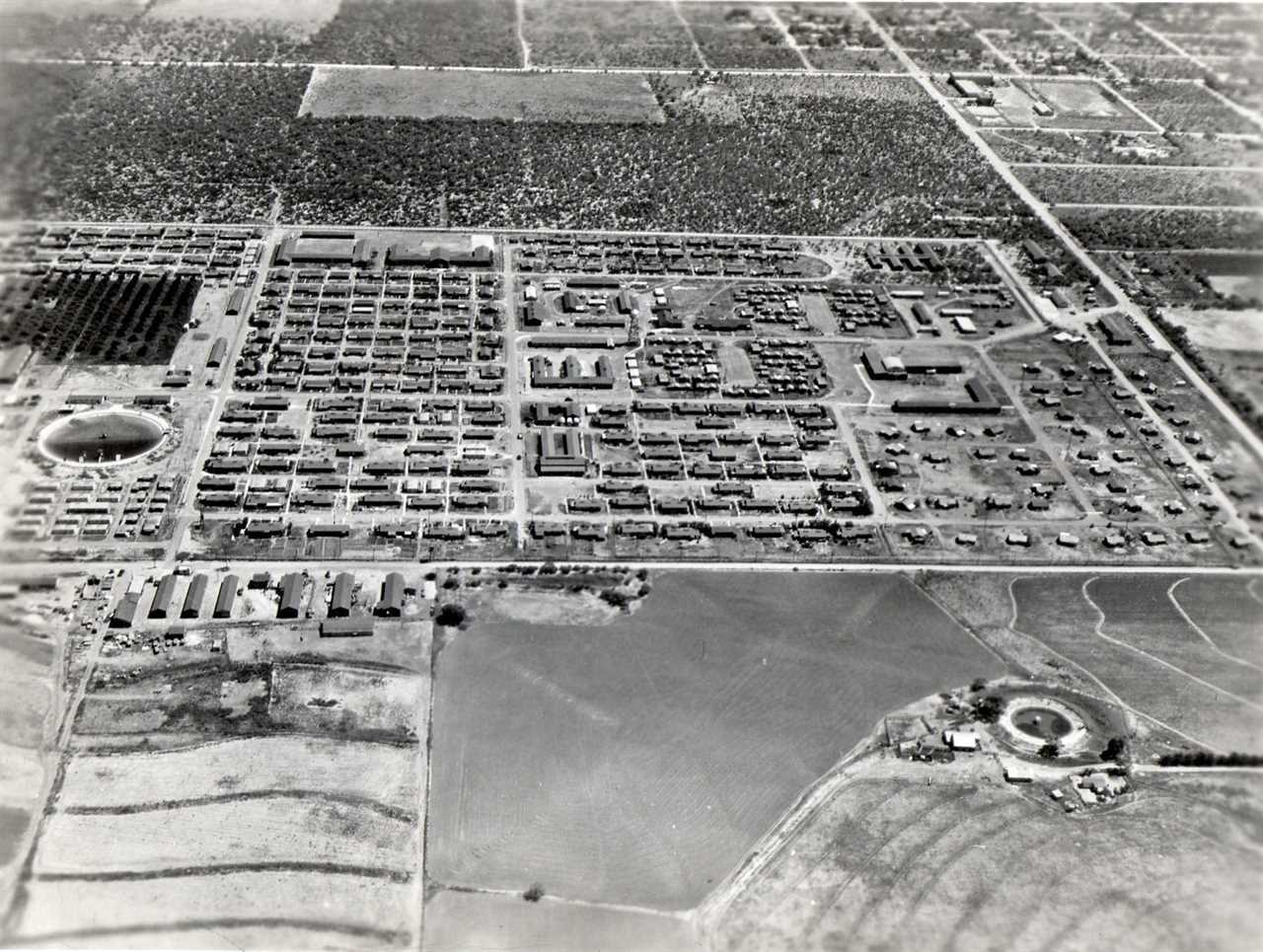
Upon their release, the government told the remaining 1,400 Japanese Latin Americans they had entered the United States illegally and had to leave, according to several sources. Shibayama told the IACHR that many Japanese, including his family, tried to return to Peru, only to be rebuffed by their own government. Between November 1945 and June 1946, more than 900 of them were deported to war-torn Japan, but about 300 individuals fought their undocumented status on U.S. soil. The Ozakis had a distant cousin in Denver who sponsored them to establish legal residence; Colorado’s governor, Ralph Carr, was a staunch opponent of internment.
“People saw Denver as a place to go when there were not many places they were able to go after the war, and when they had to start over with nothing,” Ozaki says.
But the vast majority of those who stayed in the United States were paroled out of the camp to go work in Seabrook Farms in New Jersey, where they became agricultural workers for low wages. Shibayama was one of them; he eventually made the farm’s baseball team. According to the Campaign for Justice, workers could technically leave the farm but faced daunting challenges, such as language barriers, poverty, racism, anti-Japanese postwar sentiment, and meager housing and education access. In Hidden Internment, Eigo Kudo, another former internee, describes the arduous daily toil at Seabrook: From 30-pound bushels or baskets, the workers picked out the produce as quickly as possible. In 12 hours, Kudo could only pick 10 baskets, despite being “one of the fastest.” One basket: 30 cents.
“I get $3 [a day], and then they deduct 30 percent for income tax because we were ‘illegal aliens,’ so we may run away without paying income tax or filing tax returns. … So I get $2.10,” Kudo says, before letting out a special kind of laughter — the kind that makes you double over as you realize the absurdity of your situation.
Today, calls for reparations of various kinds seem to be more and more common. In the lead-up to the 2020 election, Democratic presidential candidates touted their plans to atone for the economic and moral stain of slavery, building on decades of work by Black intellectuals. In February, Biden publicly backed the creation of a congressional commission to study the issue. Reparations for ongoing harm in other areas — such as the separation of immigrant families or climate change that’s been caused, in large part, by wealthy countries — have also gained some recognition.
But the only time Congress has enacted a legislative reparations program with direct payments was back in 1988. Surrounded by Japanese American leaders, including Rep. Norman Mineta (D-Calif.), President Ronald Reagan on Aug. 10 of that year signed into law the Civil Liberties Act, which promised those interned in U.S. government camps $20,000 and an apology letter with the presidential seal. “No payment can make up for those lost years,” Reagan said at the signing. “What is most important in this bill has less to do with property than with honor. For here we admit a wrong.”
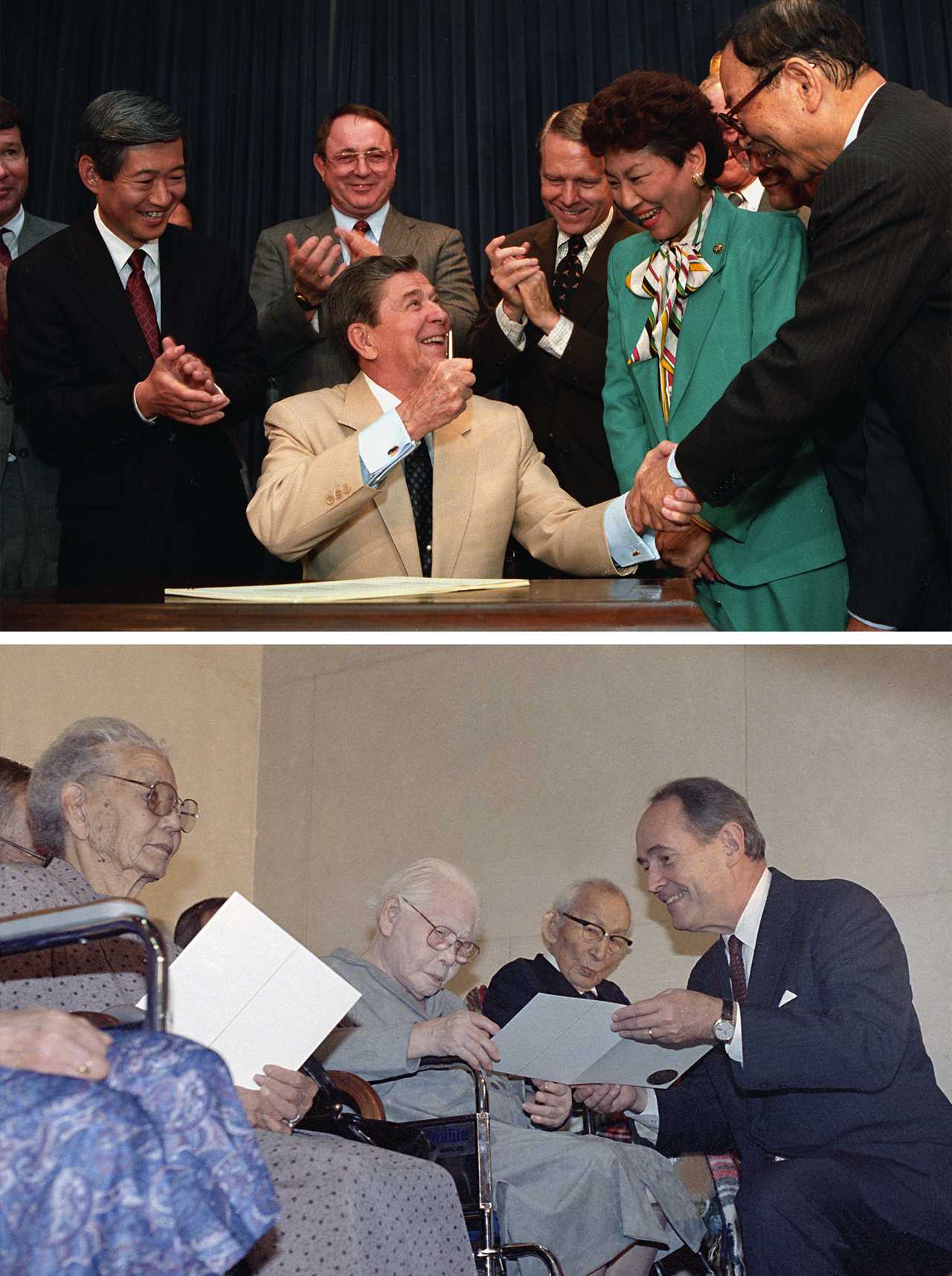
But Reagan, and the law, left an ongoing wrong unaddressed: Japanese Latin Americans could receive neither restitution nor honor because only those who were U.S. citizens or permanent residents during the period of internment were eligible.
“Unfortunately, many Japanese Americans saw that as the end of the redress movement,” says Phil Tajitsu Nash, who was part of the Japanese American redress movement in the 1980s and advises the Campaign for Justice in a personal capacity. “They said, ‘Well, there it is, we got it.’”
In 1998, the Japanese Latin Americans reached a milestone of their own: the Mochizuki settlement. Stemming from a class action lawsuit in the U.S. Court of Federal Claims, the terms of the settlement offered $5,000 to Japanese Latin Americans who had been apprehended and detained, as well as a pro-forma apology from President Bill Clinton. “More than 50 years ago, the United States Government unjustly interned, evacuated, relocated, or otherwise deprived you of liberty,” it reads, in part. Compensation came from pre-existing Civil Liberties Act funding, and the payments were not made until all the Japanese American claims had been settled. In its opinion approving the settlement, the court acknowledged its imperfection: “Who among us would ever trade our eyes or legs for $5,000 or $20,000 or a hundred times that much?” But money, the court said, is how the law “seeks to right wrongs.”
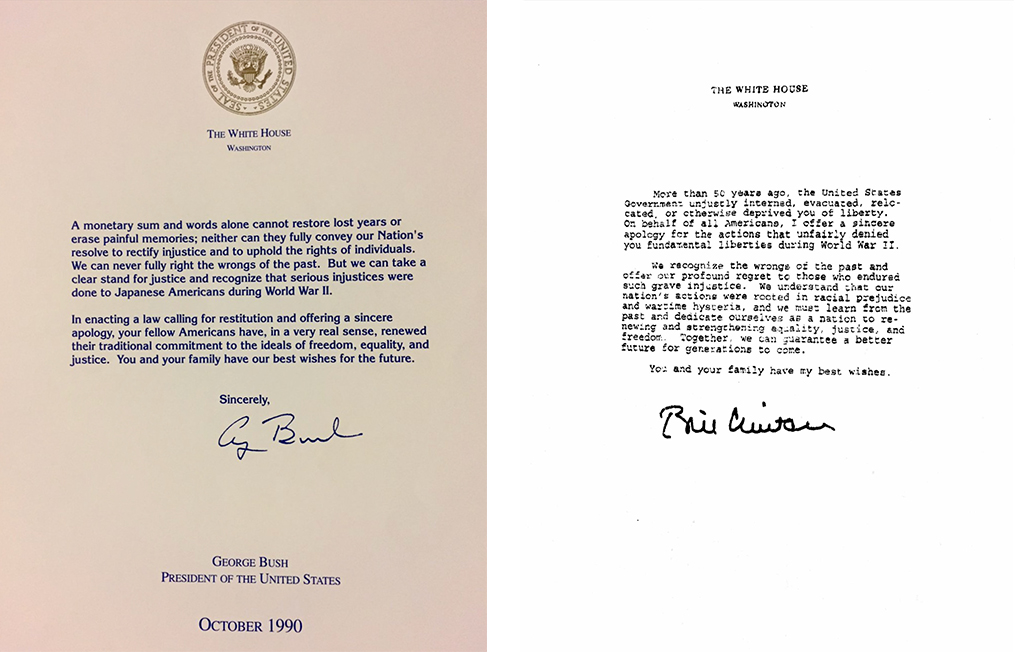
According to figures from the Justice Department, which administered the payments, 145 Japanese Latin Americans (including some living in Peru and Japan) opted into the Mochizuki settlement, even as many expressed reservations about the unequal sums. “We suffered equally as they did — indeed, when you think about it, perhaps even more because we were snatched from our own country and brought to a strange land,” wrote Rose Akiko Nishimura in a sworn declaration included in the Mochizuki opinion. The decision of whether to take the funds literally divided families. The Shibayama brothers rejected the settlement and, having lost a separate case they pursued in the U.S. Court of Federal Claims, filed their petition with the OAS in 2003. “Until the crime is over — meaning it has been fully acknowledged and fully compensated — it is ongoing,” Karen Parker, then Shibayama’s attorney, said.
In its response to the petition, President George W. Bush’s State Department contended that the United States had “already made a full apology” upon settling the Mochizuki case, and argued that the Shibayamas had not in fact exhausted their domestic options because they did not appeal the case they lost in federal court. “Petitioners are essentially asking the Commission to provide remedies for events for which the United States Government has already offered redress,” the Department argued in 2004.
Around the same time, the JLA redress movement found an ally in Congress: Rep. Xavier Becerra (D-Calif.), who introduced a resolution that would have extended equal compensation to the Japanese Latin Americans. “We need to do it soon, because there aren’t too many people living today who can tell you from their personal experience what we did,” Becerra said in 2004. But the bill stalled in Congress, and the last hearings on this issue took place in 2009. Becerra, who is now Biden’s Health secretary, did not respond to a request for comment.
According to Nash, who also co-presides over the board of directors of the Asian American Legal Defense and Education Fund, the Civil Liberties Act was possible because Democrats saw internment as a civil liberties issue, while Republicans saw it as an unjust taking of property — “two sides of the same argument.” But now, he doubts such broad support could be achieved.
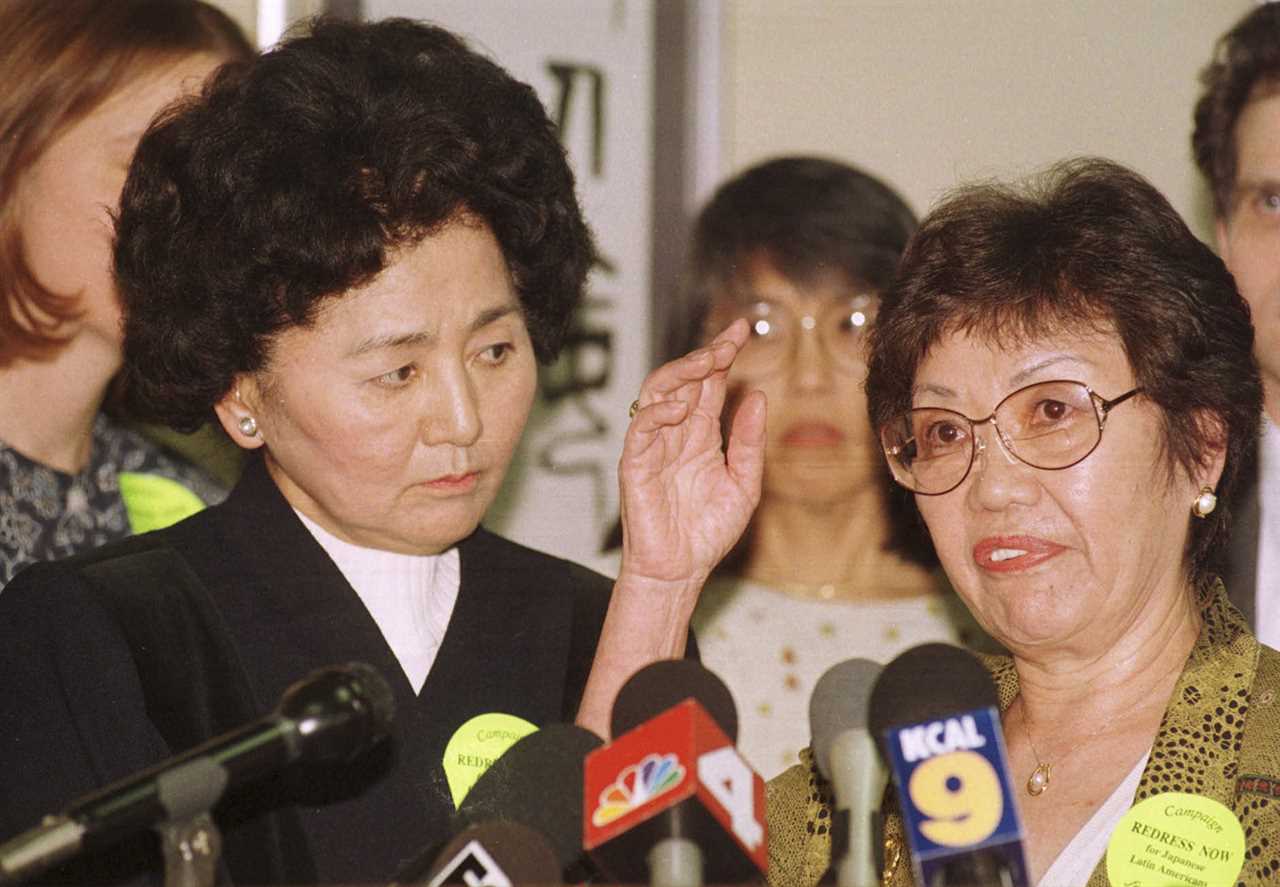
Hypothetically, if Congress managed to pass a bill giving $20,000 to the 300 Japanese Latin Americans who remained in the country, or their descendants, the government would pay approximately $6 million, which Nash calls “a rounding error in the federal budget.” The Campaign for Justice’s Shimizu, who also founded the Japanese Peruvian Oral History Project, says the number of recipients might even be lower, since some potential beneficiaries now live abroad. (The Campaign for Justice is planning a virtual reunion next year to conduct a more accurate census.) But beyond monetary compensation, the group is also seeking a public apology, full disclosure of the government’s actions during this period, and assurances that these violations won’t happen again in the future to any group.
The campaign also wants to work in tandem with those seeking redress for slavery. “[W]e are in solidarity with and will not be pitted against the reparations movement of the Black community,” Bekki Shibayama, Art’s daughter, wrote in an email. “Japanese Latin Americans have contributions to make to enact H.R.40,” the congressional resolution to create a reparations commission, which Biden has supported while expressing private reservations.
It’s unclear how far the president is willing to go on reparations-style programs. When asked in early November about reports that his administration was considering offering payments to immigrant families who had been separated at the U.S. border under President Donald Trump, Biden dismissed the reports as “garbage.” Meanwhile, in February, a government camp that houses migrant children opened in Carrizo Springs, Texas, about 16 minutes south of Crystal City. At the same time, the administration has promised support to Asian Americans and Pacific Islanders, especially after the spate of violence the community has suffered during the pandemic.
But Saito, the law professor, says that when it comes to the human rights principles the United States professes to stand by, America “tends to exempt itself from their application.” She says that while the United States has not ratified OAS’ American Convention on Human Rights, Washington is bound by the American Declaration on the Rights and Duties of Man, which OAS members adopted at its founding. One possible explanation for the official resistance to the JLA redress campaign to date is that it would catalyze public support to address other moral debts the government is unprepared to tackle: “There’s much more resistance to redress for people of African descent in the United States because it’s so huge,” Saito, who has been working with the JLA movement, said in an interview. “Part of what we have to do is we have to push for redress at every level possible, and if we can win some smaller victories, we come closer to getting larger victories.”
The Campaign for Justice says it has researched strategies to continue pushing for redress “in international forums, domestic forums, and in the court of public opinion,” per a statement from the organization. Still, much hinges on the will of the U.S. government to heed the requests of OAS’ human rights body.
At the very minimum, members of the campaign believe they can leave a public record for future generations. Shibayama brought his case before IACHR, in part, to tell the world how his family’s life had changed as a result of the government’s actions. His father, who had been a successful businessman in Peru, died mired in a deep depression. “The U.S. government killed my grandfather’s spirit,” Bekki Shibayama told the IACHR as she held back tears. “I only knew him as a shell of his former self.”
“I see the layers of trauma that get passed down to these generations,” adds Ozaki. “It’s not what would make me proud to be an American.”
----------------------------------------
By: Jesús A. Rodríguez
Title: America’s Forgotten Internment
Sourced From: www.politico.com/news/magazine/2021/12/05/japanese-latinos-us-war-hostages-history-523711
Published Date: Sun, 05 Dec 2021 07:00:29 EST
Did you miss our previous article...
https://consumernewsnetwork.com/politics-us/europe-and-the-usa-are-ready-to-imposesignificant-and-serious-sanctions-on-russia-if-it-invades-ukraine






